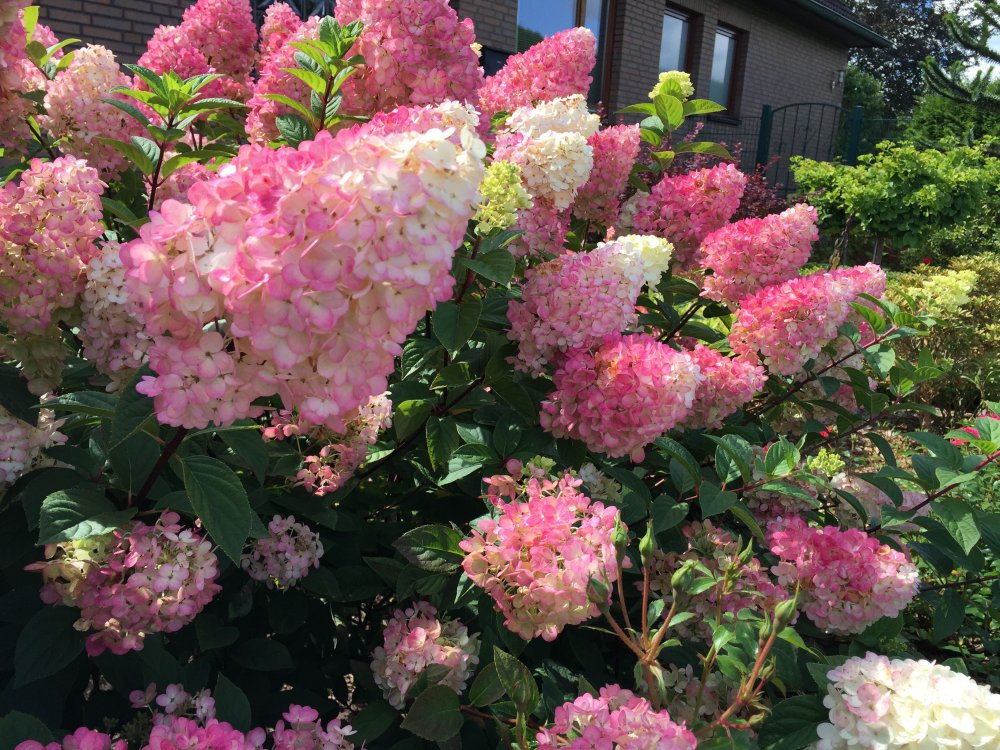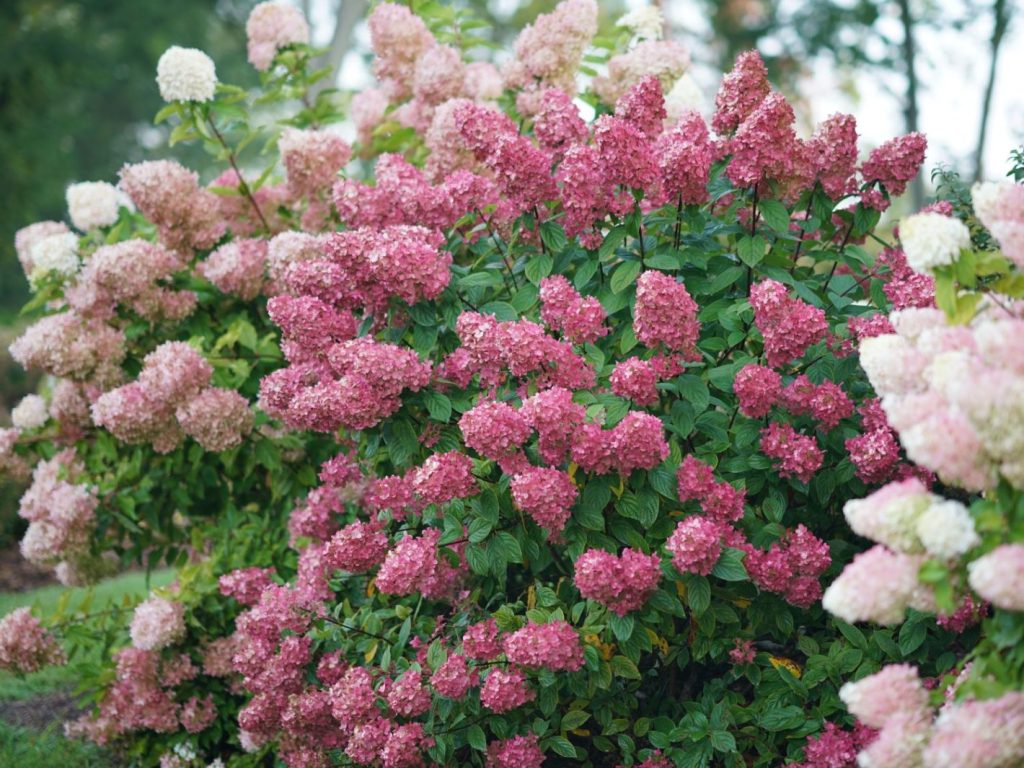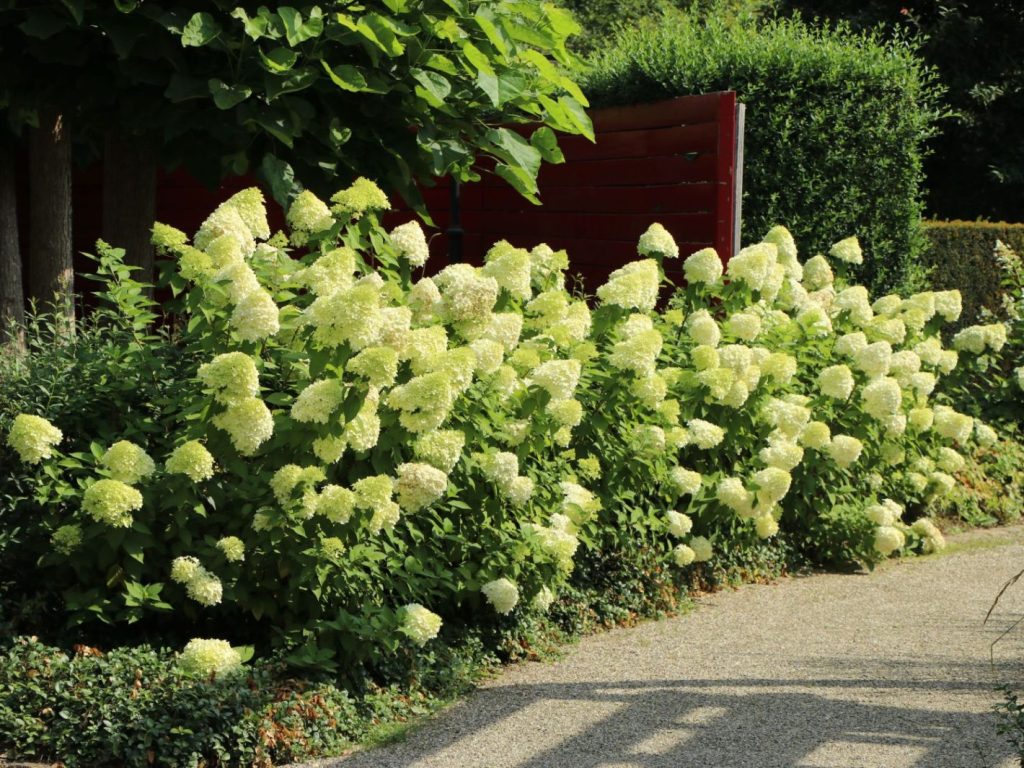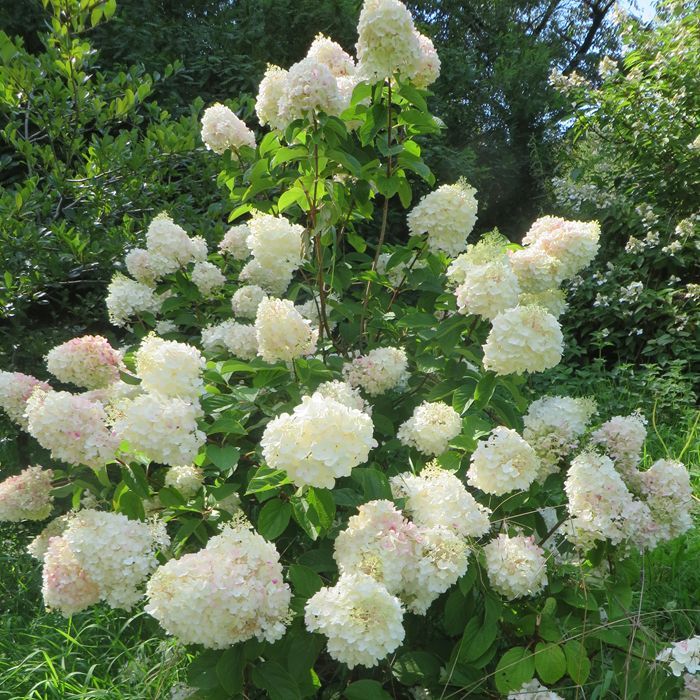The panicle hydrangea is the robust sister of the popular farmer’s hydrangea. It forms large panicles of flowers in summer, is more frost hardy and also copes better with drought.
Like almost all hydrangeas, Hydrangea paniculata comes from East Asia. It grows in partially shaded locations in deciduous and alluvial forests on fresh to moist soil and reaches heights of up to nine meters there.

The panicle hydrangea grows upright and shrubby with numerous forked branches. In the garden, panicle hydrangeas are usually two to four meters high and up to three meters wide, depending on the variety and location. Annual growth is 25 centimetres, often more than double after severe pruning.

The wide, conical flower panicles of the ‘Grandiflora’ variety are 20 to 25 centimeters long and appear at the ends of the new shoots from July to September. They turn pale pink when the hydrangeas fade and remain attractive for a long time even when they have dried.

The soil should be sandy to slightly loamy, fresh to moist, rich in humus and not too poor in nutrients. In contrast to most other hydrangeas, the panicle hydrangea also tolerates shorter dry periods relatively well. The ideal place for panicle hydrangeas is sunny to shady and sheltered from the wind, as the long flowering shoots are at risk of breaking in the wind during the flowering period.



